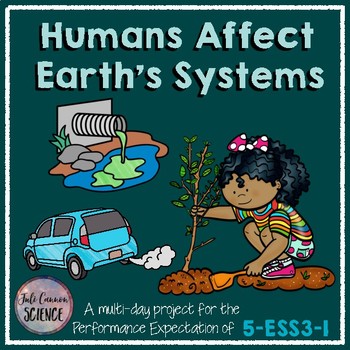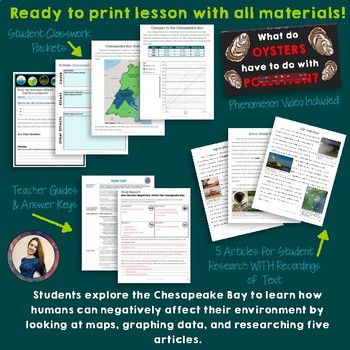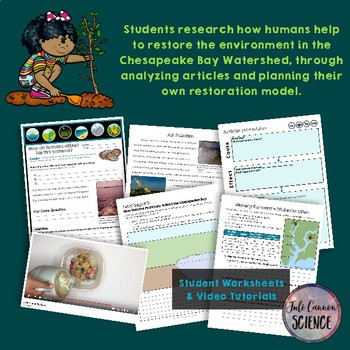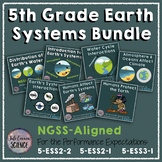NGSS 5-ESS3-1 Human Impact on Earth Systems 5th Grade
- Zip
What educators are saying
Also included in
- Save your time and engage your students with this NGSS-aligned 5th grade unit! It covers three NGSS 5th grade Earth Systems standards using phenomena and hands on experiences! NOTE: There are SO many topics that you can cover about Earth's systems. I chose to focus in detail on water-related phenomePrice $28.50Original Price $33.50Save $5.00
- The bundle of all bundles! How much time do you waste scrolling for science lesson plans that are NGSS-aligned, interesting, and engaging? Reclaim that time with one simple click. Save 20% when you purchase this resource!Want to make sure these lessons match your teaching style before purchasing? DoPrice $102.00Original Price $127.50Save $25.50
Learning Objective
Students will obtain and combine information about ways that humans negatively affect the Earth, and how the Chesapeake Bay community uses science ideas to protect the Earth’s resources and environment.
Description
This 5th grade project consists of two parts for the NGSS Performance Expectation of:
5-ESS3-1. Obtain and combine information about ways individual communities use science ideas to protect the Earth’s resources and environment.
In Part 1, students learn about how humans affect the Earth systems of the Chesapeake Bay by exploring maps, graphing, and reading articles over the course of a few days.
In Part 2, students use multiple resources to learn about how communities are working to help solve the pollution issue in the Chesapeake Bay. Students will read about how people living near the Chesapeake Bay are working to restore oyster reefs and improve water quality. They will also build their own oyster reef models.
This resource is a non-editable PDF. Part 1 includes 12 pages of student activities, along with a teacher's guide, answer key, 5 research articles, 5 audio files of recordings of the articles, a video to introduce the phenomena, and a tutorial video. Part 2 includes a 16 pages of student activities, 3 audio recordings of the articles, answer key, and a tutorial video.
Materials for Part 1:
- Color Pencils
- Rulers
- Computers and headphones (optional)
Materials for Part 2, per lab group:
- Plastic container
- Shell-shaped pasta
- Clay
- Sand
- Pitcher, beaker, or cup to pour water
- Rocks, real shells, or other hard materials
- Computers (optional)
Prior Knowledge:






